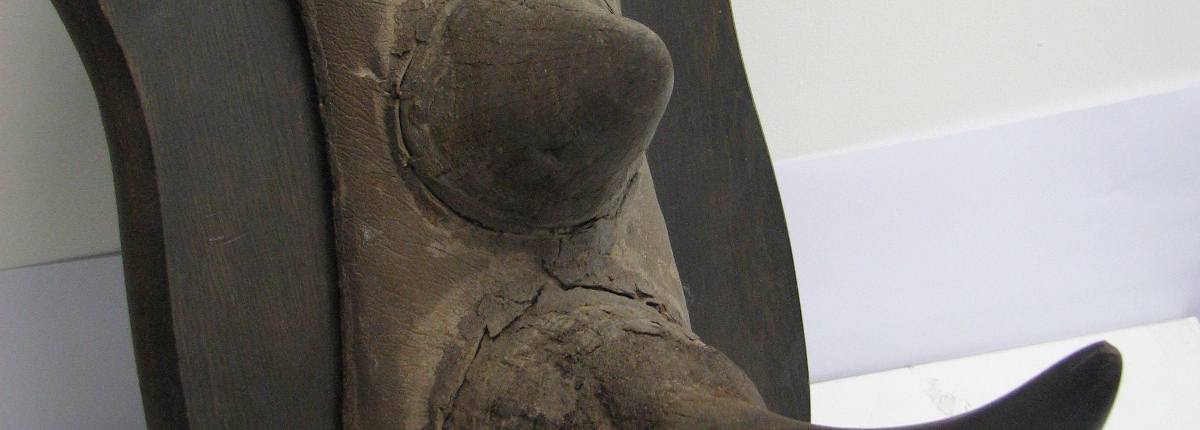Sounding the horn: a survey of rhino horn antiques at UK auction
By: Sue Brace and Cathy Dean, Save the Rhino International @savetherhino
Recent research into the UK trade of elephant ivory antiques found post-1947 ivory available to buy, leading the Government to conclude this trade was detrimental to wild elephants. It is currently legal to trade antique ivory (defined as pre-1947, i.e. from an elephant killed before 3 March 1947 – the date being defined in EU regulations for intra-EU trade of CITES specimens). However, a ban (with exemptions) on ivory is now proposed. As conservation issues for rhinos are similar, we examined the UK trade in rhino horn antiques to better understand whether this may be detrimental to wild rhinos.
We analysed all 300 rhino horn items offered for sale in 2017 through UK auction houses, to answer the following questions:
- Can we be certain all auctioned rhino horn antiques were pre-1947 and ‘worked’ i.e. carved, and of artistic merit?
- Were CITES’ regulations consistently flagged in the lot descriptions for potential buyers?
- Is the trade effectively regulated, and are suspect items appropriately investigated?
- Could the UK antiques trade be used to launder modern rhino horn?
The twelve-month survey followed auction house room sales for which online bidding was also possible via one or more of three sales platforms. It also included sales by one major auction house that sold a significant number of high-value items through its own online bidding system. The survey did not include items sold by antique dealers, antique shops or private sales, nor sales on the wider internet. We identified individual items, described as ‘definitely’, ‘probably’ or ’possibly’ rhino horn, offered for sale during 2017 at auction in the UK. We documented how they were advertised, which auction houses they were sold at, and the sale outcome. We did not purchase any items for testing, nor intervene in any of the sales.
The concerns arising from our findings are:
- There is no guarantee all items offered for sale were pre-1947; to our knowledge no radiocarbon-14 dating (the only method to accurately detect horn age) was carried out. In cases where age estimates were provided, they were given as very broad ranges. 89% of all items were listed without any detailed provenance (history) and 25% with no age estimate at all.
- It is uncertain whether all items described as rhino horn were in fact made of rhino horn; to our knowledge no DNA-testing was carried out. 66 (20%) of the 323 lots offered (some of the 300 items were offered for sale more than once during the year) were described as ‘possibly’ or ‘probably’ rhino horn.
- 63% of auction houses offered only one or two rhino horn items in 2017; thus expertise in identifying suspect items will be limited when so few rhino horn items are seen.
- Based on auction catalogue photographs, all items could be defined as ‘worked’ but, in some cases, the working appeared minimal or crude.
- CITES permit issues and export regulations were inconsistently flagged on auction houses’ websites, sometimes not at all.
- Four auction houses advertised some lots in Mandarin and 17 auction houses (58 of the lots offered) stated the weight of the rhino horn in catalogue listings.
- Proper vetting of rhino horn antiques is hindered by: the cost and complexity of having them radiocarbon-14 dated or DNA tested; the rapid turnover of lots for auctions; and the lack of expertise in rhino horn antiques in all but a few of the auction houses involved.
- Of the 242 lots sold, for which the sale price is known, 84 items were sold for up to £200, which is potentially substantially less than the ‘grind-down’ value of rhino horn.
- Professional associations such as the Society of Fine Art Auctioneers and Valuers and the National Association of Valuers and Auctioneers work hard to promote and improve best practice, however, most auction houses (34 of the 51 surveyed) appear not to be members. This means if any stakeholder raises issues, engagement and resolution is on a one-to-one basis and reforms cannot be easily made uniform without regulation.
- Formal investigation of suspect items is hampered by lack of local experience, resources, professional input, technical back-up and time.
We invite stakeholders to join discussion of our survey’s findings and recommendations arising. Please see here for the full report with further details. Areas of further research have been identified. We suggest immediate ‘best practice’ improvements that do not require UK legislation, and we propose longer-term changes in legislative guidance, including the introduction of a ‘Lifetime Passport’ for rhino horn antiques and consideration of a ban (with exemptions) on the sale of rhino horn items. Auction houses are alert to any suspect item as they do not wish to break the law, nor contribute to the extinction of endangered species. We hope and strive for future collaborative action with auction houses, dealers and associations to ensure the UK trade in rhino horn antiques does not affect rhinos in the wild.
Article edited by: Nafeesa Esmail





 Meshach Pierre
Meshach Pierre